Exploring the Darker Side of Palermo
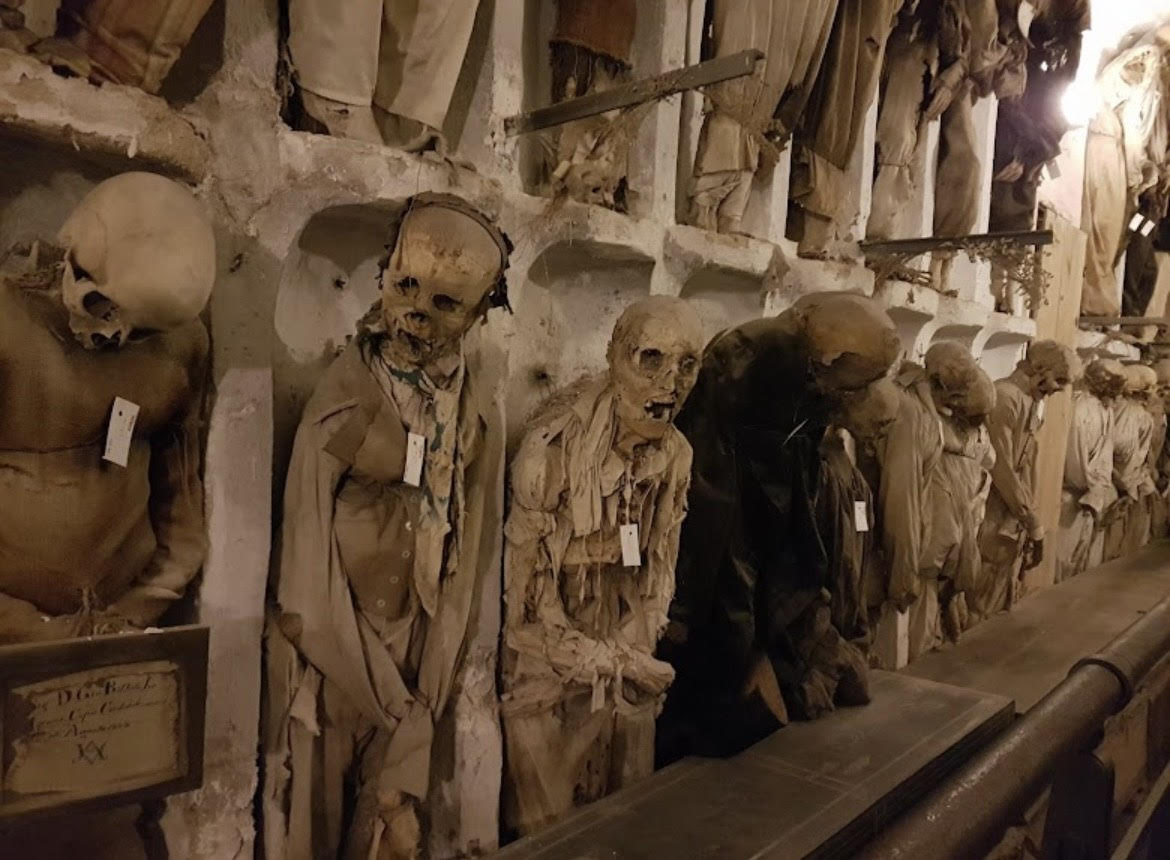
Having recently returned from a trip to Palermo in Sicily, I thought I would write a blog post about a couple of the places my partner and I visited. Walking along the main street of Palermo, via Maqueda, one may feel the architecture of the buildings gives the city an Italian feel, however it is still rich with its own history and culture. From the exquisite sea food dishes served at restaurants like sword fish lasagna and squid burgers, to the shop windows featuring the iconic Sicilian ceramic head in a variety of colours and styles.
Catacombe dei Cappuccini
While the food didn’t suit our taste, we found the history of Sicily and Palermo of interest to us. The Catacombe dei Cappuccini is a must-visit location for any traveller interested in dark tourism. I went to the Catacombe dei Cappuccini thinking I knew what to expect because I had been to the Catacombs of Paris and the Capela dos Ossos (Chapel of Bones) in Évora, Portugal, but it is not the same. The ticket desk repeatedly informed us that taking photos was not permitted, but I managed to get a few to share with you. I assumed there would be maybe one room with little more than thirty bodies on display, but there are actually almost 8,000 corpses congesting the walls of the multiple hallways.
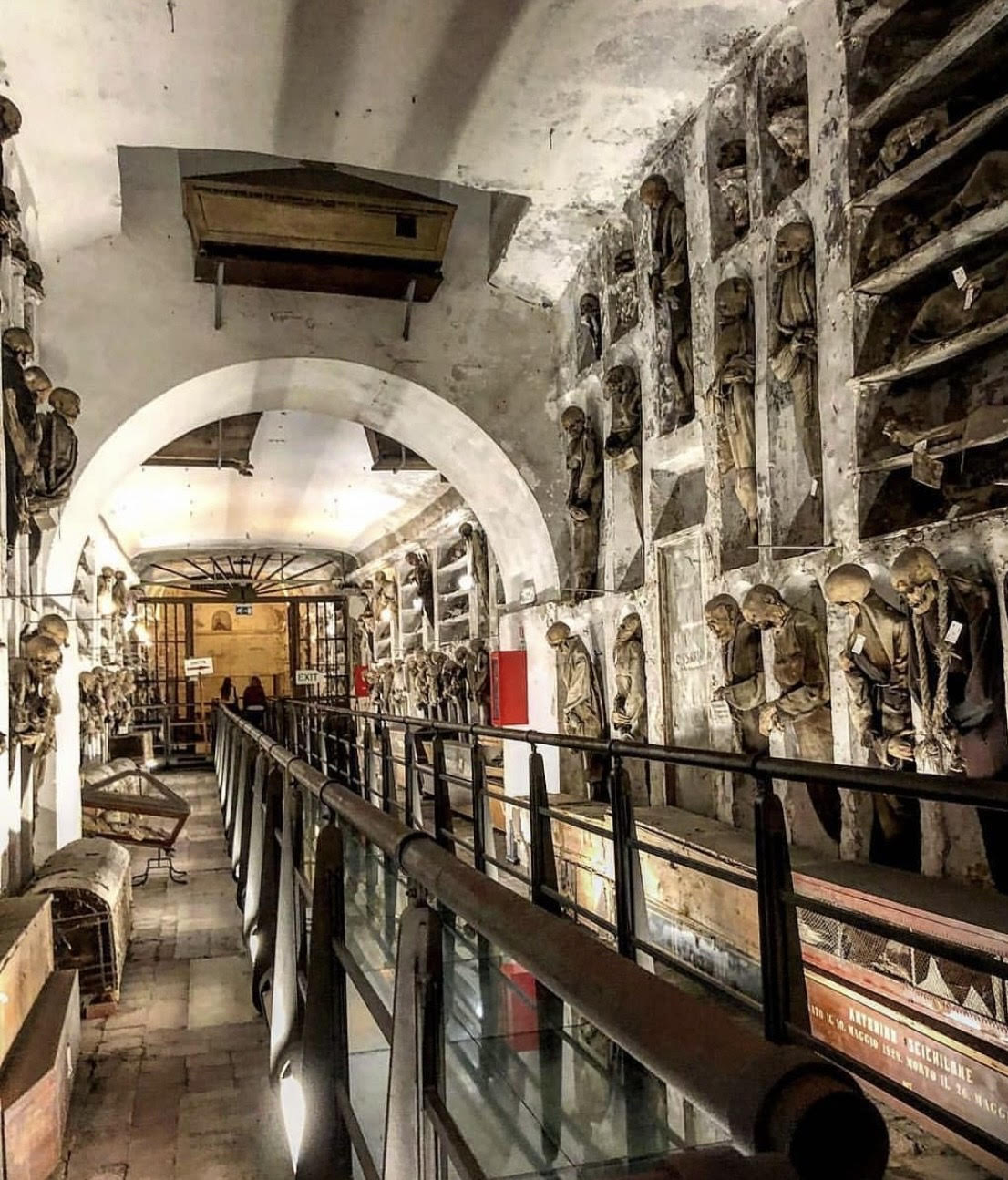
The first thing that I noticed is that almost every skeleton was dressed in the clothes they were buried in. This, in my opinion, not only demonstrates how the fashion for dressing the deceased has evolved over time—from white funeral gowns to evening gowns and suits—but it also demonstrates how important it is now to personalise the burial of our loved ones by burying them in their favourite outfit or the shirt of the football team they support.
Many of the corpses at the Catacombe dei Cappuccini still have skin and hair on them allowing many of the deceased to retain characteristics of their appearance. This enables visitors to identify them as a man, woman, or child, as well as if they suffered from any medical conditions. This gives Catacombe dei Cappuccini a completely different atmosphere that sets it apart from other locations like the Paris catacombs, where the sheer amount of remains may overwhelm you and find it difficult to differentiate between the skulls that line the passageways.
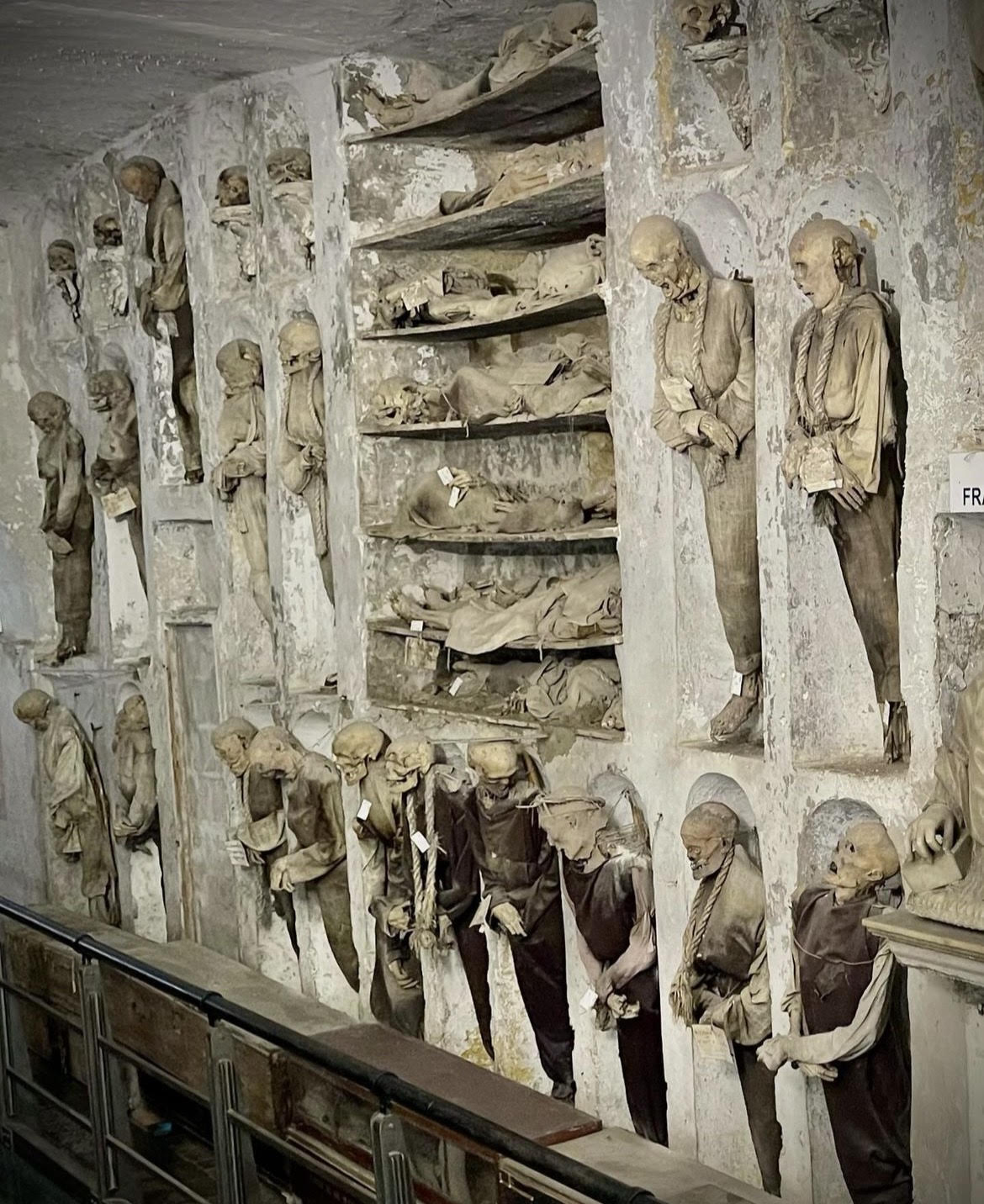
While each individual is a fascinating sight to see, the daughter of Mario Lombardo, Roslia Lombardo, known as “Sleeping Beauty” is a somber experience. Although Roslia died of pneumonia caused by the Spanish Flu in 1920, she has shown little signs of decomposition, making her appear like she is asleep. It is believed that her father couldn’t comprehend her passing and asked an embalmer, Alfredo Salafia and a taxidermist to preserve his daughter. While they have been many theories to suggest that she is actually a waxwork figure, astonishingly X-ray scanning revealed her organs still to be intact.
The preservation of Roslia brings into several questions, is this a dignified burial? Should relatives that maybe related to her be consulted about her being on display? Was it right for her father to preserve and display her body like this, considering that she was unable to consent to this form of burial due to her being nearly only 2 years of age.
No Mafia Memorial
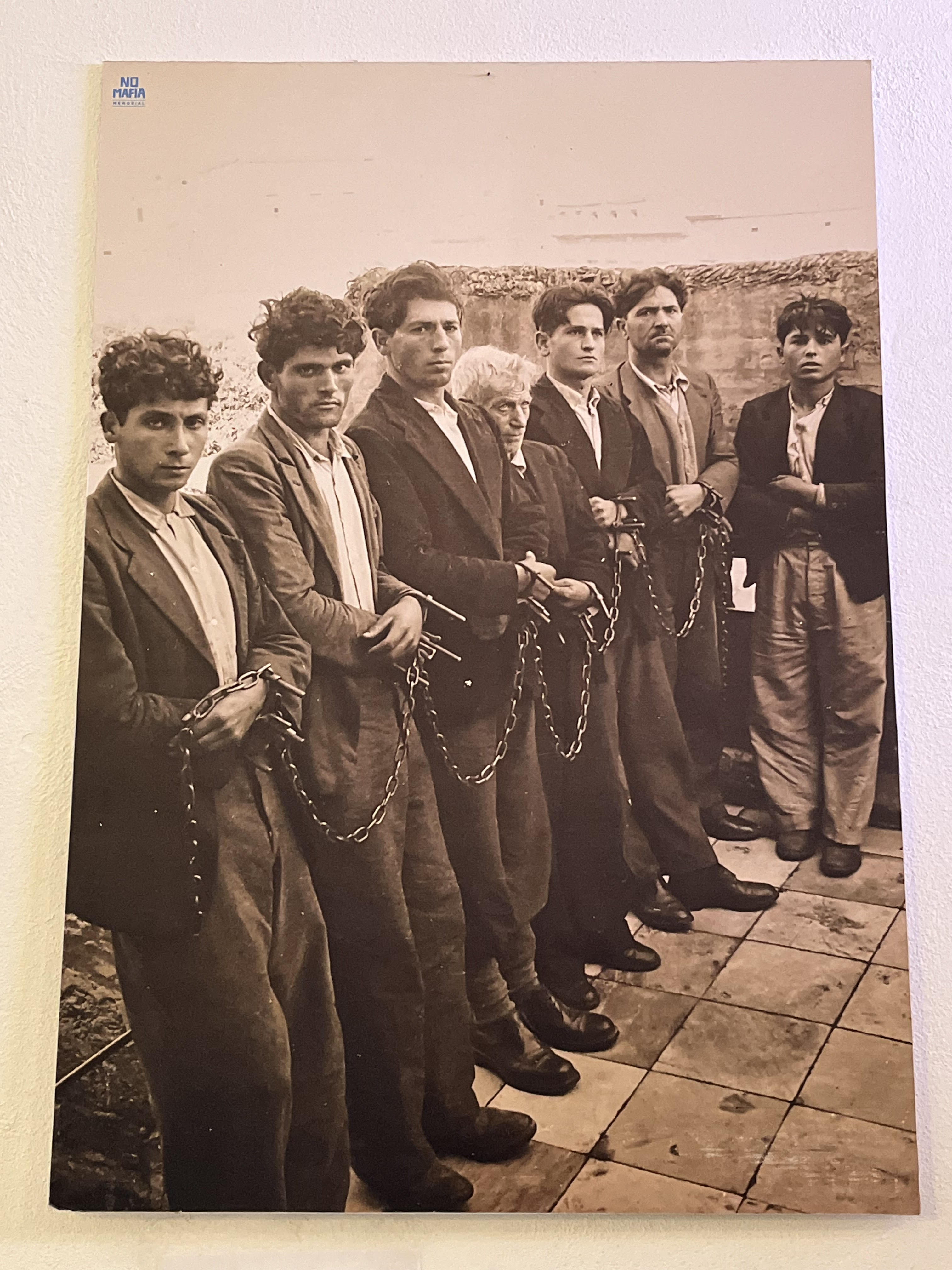
Though the museum of the No Mafia Memorial is only an arrangement of photographs of those linked to the Mafia, victims of the Mafia and those who grieve lost loved ones, its message is clear, the Mafia has not only terrorised communities but corrupted Italy’s government and law enforcement. Walking around the museum looking at the photos and newspaper clippings revealed that the media did not only cover those caught in the crossfire but also the criminal activity of the mafia, which they themselves may consider as accomplishments, portraying them as celebrities of the criminal underworld.
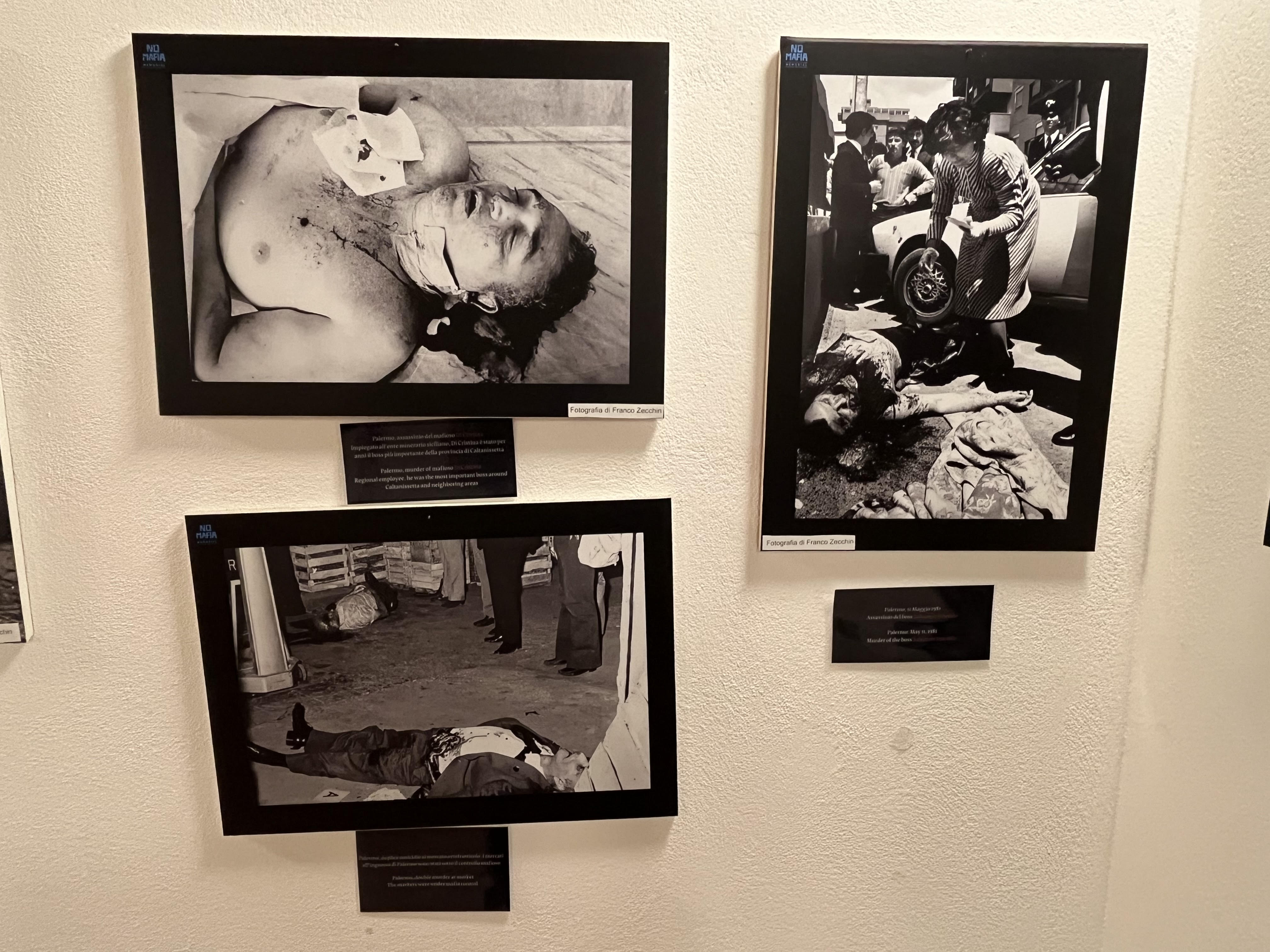
This, in my opinion raises the question of what information on criminals should and shouldn’t be reported. Furthermore, shouldn’t the effects of media coverage be considered in light of how this maybe interpreted by individuals who have been harmed by them.
The Magnificent Seven Cemeteries
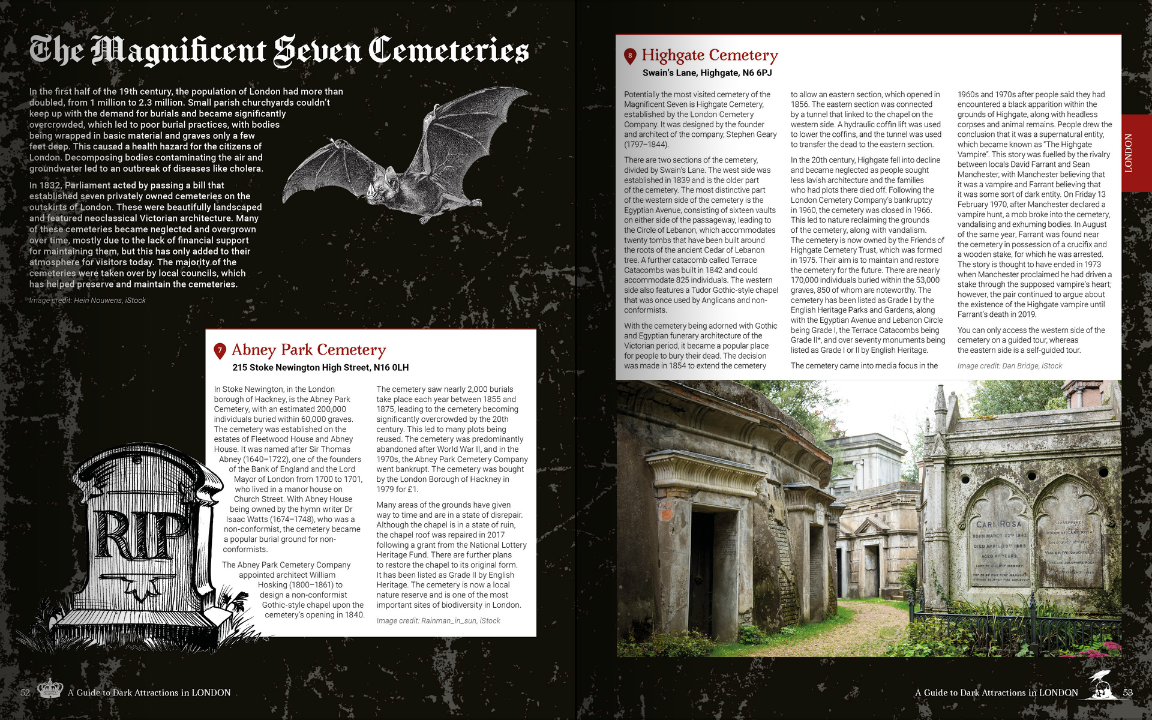
As the design of my book takes shape and I move toward its publication I will be sharing a few sneak peeks of some of the pages of my book. The page spread of the Magnificent Seven Cemetries is what I thought I would share first, though I will share the pages of those who have commented a specific page number on one of my Facebook posts. This section of the book is based on the seven cemeteries that were established in London after Parliament passed a bill in 1832 in response to parish churchyards being overcrowded with burials.
During the design process for this section of the book, I considered the type of people who visit cemeteries and share about them on social media. Due to the neoclassical Victorian style of these cemeteries, I discovered that a large number of these individuals liked darker colouring. With this in mind my designer Marie-Louise used a dark background for each of the pages and used images that featured Victorian architecture. While the sketched illustrations have been incorporated into the whole of the book to add some flare throughout, the two that were picked of the bat and headstone were picked to complement the text and those reading this particular section.
Please feel free to head over to my Facebook pages to share your thoughts on the page spread and also keep an eye on future sneak peeks of my book.
